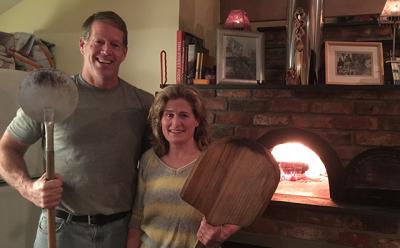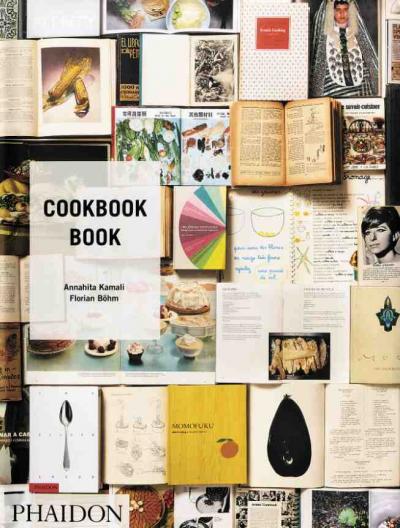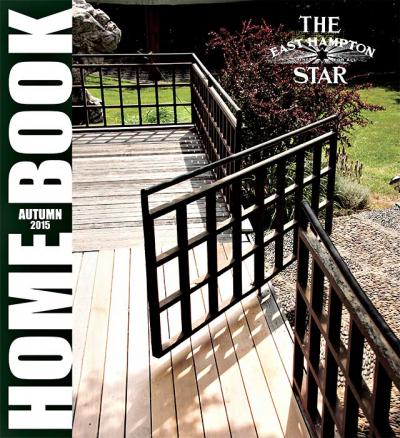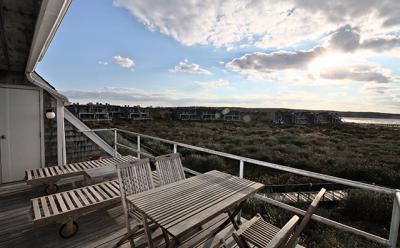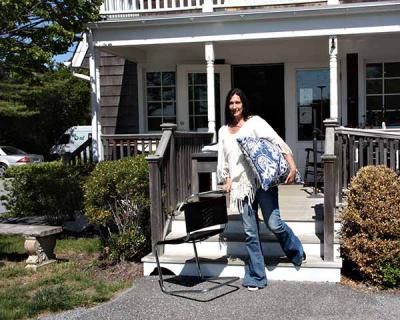Star Gardener: Choose a Dogwood While It Blooms
Star Gardener: Choose a Dogwood While It Blooms

If you’ve been entranced by the bountiful crop of flowers on the kousa dogwoods this spring and have been tempted to add one to your garden, now is the time to act. Head right to your favorite garden center and pick one out while they are still in bloom — what you see is what you get, is what I was told years ago by a nurseryman.
Look closely as you go around town and you will see there is tremendous variation among kousas. Some have very large, oval and overlapping petals, while others have small, star-shaped ones. Some trees are so covered with blooms you can hardly see the leaves, and the branches hang down from their weight, and others have only a few paltry flowers.
In East Hampton Village, these differences are easy to see, in the cluster of trees growing near Town Pond, in front yards on Dayton Lane, and in Cedar Lawn Cemetery on Cooper Lane.
There are other big differences between individual plants as well. In our area most kousas have multiple trunks, but they are also available with single trunks. Their structure, or architecture, is normally horizontal, although there are more upright ones and even weeping varieties.
Depending on where you are placing it, its shape may be an important consideration. At the small vest-pocket park in the village in front of the old barn that houses the Ralph Lauren surf shop, called Millstone Park after the old millstone at its center, the Garden Club of East Hampton was careful to select a pair of narrow, upright trees to flank the bench on the left, while the two on either side of the shop entrance are more spreading.
Dogwoods are one of the most beautiful of flowering trees and rightfully one of the most popular trees for the home. The kousas, also called Chinese dogwoods but distributed from central China northeastward through Korea and Japan, are close relatives of the natives that flower along South Fork roadsides in wooded areas. The many venerable kousa specimens here indicate its popularity goes back decades.
“Chinese” Wilson introduced the kousa dogwood into the United States from seed he collected in China in the early years of the 20th century. He later went on to become head of the Arnold Arboretum in Boston. A great admirer of the eastern flowering dogwood, he wrote that it was “the envy and despair” of English gardeners, who could not grow it because of differences in climate. As much as he loved our native dogwood, though, he admitted that the kousa was a more valuable garden plant because of its greater bud hardiness.
Native dogwoods flower in April on bare branches. This past winter in particular, when the weather cycled from very warm to extended cold snaps, their buds were stressed. Kousas begin blooming in June after the foliage has developed, and we can see the weather did not affect flowering.
There are other differences that make the kousa an excellent choice for the home. Its flowers can last throughout the summer, while those of the eastern dogwood last only about two weeks. Kousas also prefer and flower more abundantly in full sun; natives do better in a partially shaded position. Some of the variegated kousa forms do prefer some shade, and I use smaller varieties as a foil to light up dark areas in the woodland garden.
Kousas are much more resistant to disease. Both they and the Rutgers hybrids, which are crosses of the native and kousa species, are largely unaffected by the anthracnose diseases that devastated native populations during the 1990s.
The showy fruit in autumn, which resembles large raspberries or strawberries, and the mottled bark, in shades of gray, copper, and olive, extend their interest in all seasons.
There are hundreds of named selections of the kousas and their hybrids. Many are grafted, though some popular varieties, like Milky Way, are propagated from seed strains, and their offspring can be highly variable.
The cultivar with the largest flowers of all is Venus, one of the Rutgers hybrids crossed with the western dogwood. Its flowers are typically five to six inches in diameter. At 15 years, the original tree was reported to measure 18 feet tall by 25 feet wide. Some might think it is a little too much of a good thing — or not.
A handsome tree of unknown parentage with lots of large flowers will make most people happy, and our garden centers and nurseries have a good selection. If you would prefer something a little more unusual and different, Broken Arrow Nursery in Connecticut lists about 20 cultivars, and Forestfarm in the Pacific Northwest, nearly that many.
Since kousa dogwoods are long-lived trees, a little thought given to selecting one will pay long-term dividends.


